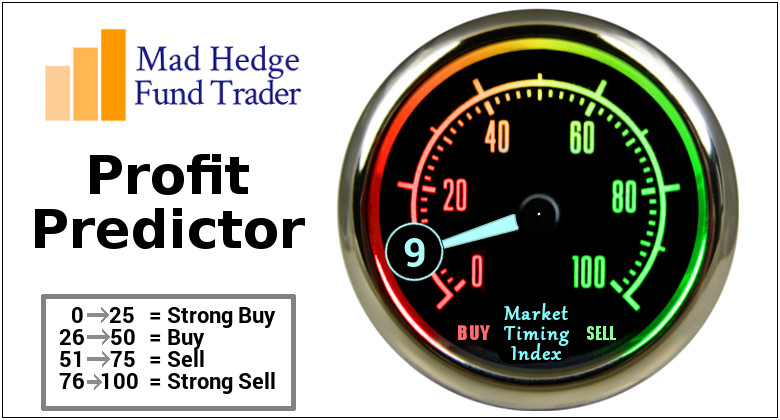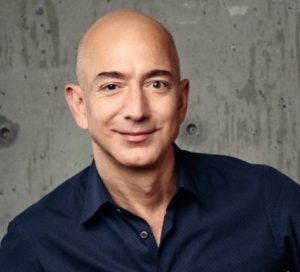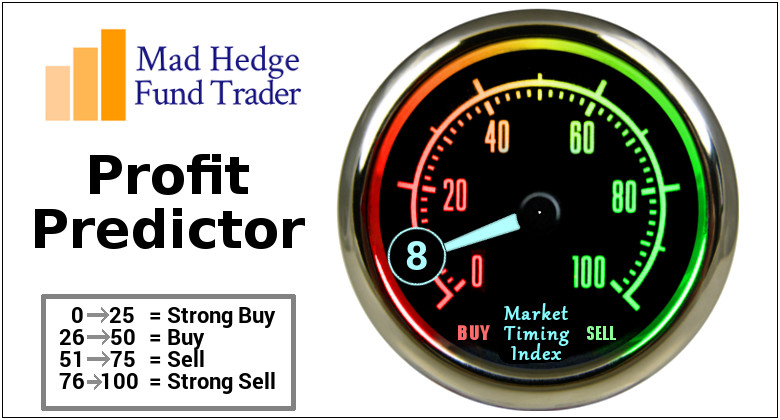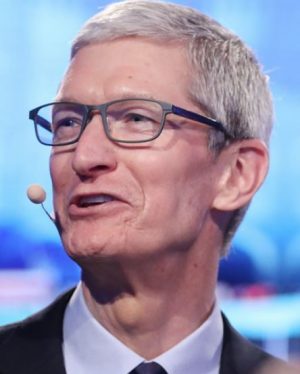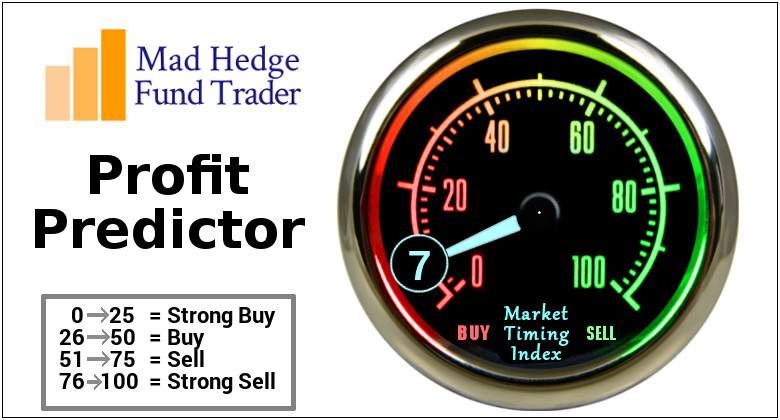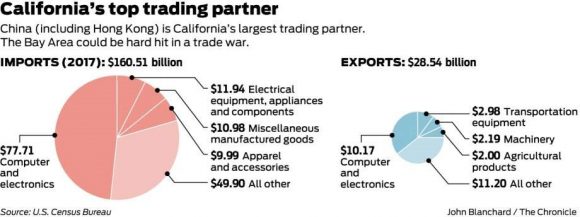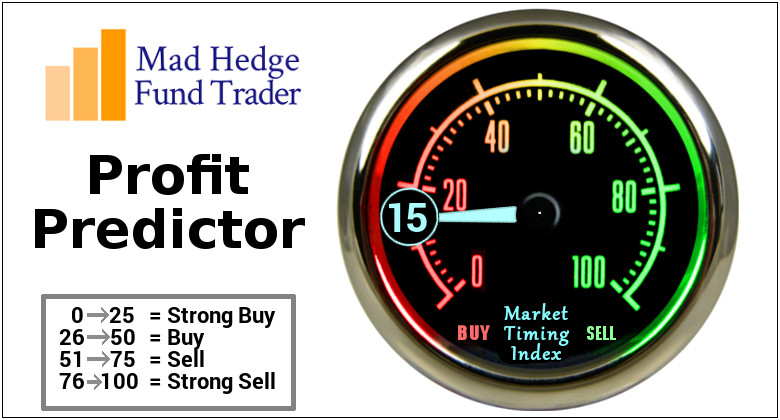Mad Hedge Technology Letter
April 4, 2018
Fiat Lux
Featured Trade:
(SPOTIFY KILLS IT ON LISTING DAY),
(SPOT), (DBX), (GOOGL), (AAPL), (AMZN), (CRM), (NFLX), (FB)
Tag Archive for: (AAPL)
The banner year for the cloud continues as Dropbox's (DBX) blowout IPO passed with flying colors.
Investors' voracity for anything connecting to big data continues unabated.
Big data shares are now fetching a big premium, and recent negative news has highlighted how important big data is to every business.
Let's face it, Spotify (SPOT) needs capital to reinvest into its platform to achieve the type of scale that deems margins healthy enough to profit, even though it says it doesn't.
Big data architecture takes time to cultivate, but more importantly it costs a huge chunk of money to construct a platform worthy enough to satisfy consumers.
The daunting proposition of competing with the FANGs for users only makes sense if there is a reservoir of funds to accompany the fight.
Spotify CEO Daniel Ek has milked the private market for funding, making himself a multibillionaire in the process. And as another avenue of capital raising, he might as well go to the public to fund the venture in the future.
Cloud and big data companies have identified the insatiable investor appetite for their services. Crystalizing this sentiment is Salesforce's (CRM) recent purchase of MuleSoft - integration software that connects apps, data, and devices - for 18% more than its original offer for $6.5 billion.
The price was so exorbitant, analysts speculated that a price war broke out, but Salesforce paid such a high price because it is convinced that MuleSoft will triple in size by 2021. That is another great trading opportunity missed by you and me.
An 18% premium to the original price will seem like peanuts in five years. The year 2018 is unequivocally a sellers' market from the chips up to the end product and everything in between on the supply chain.
Spotify cannot make money if it's not scaled to 150 million users, compared to its current 76 million. And 200 million and 300 million would give CEO Daniel Ek peace of mind, but it's a hard slog.
Pouring gas on the fire, Spotify is going public at the worst possible time as tech stocks have been the recipient of a regulatory witch hunt pounding the NASDAQ, sending it firmly into correction territory.
Next up was Spotify's day to shine in the sun directly listing its stock.
Existing investors and Spotify employees are free to unload shares all they want, or load up on the first day. In addition, no new shares are being issued. This is unprecedented in the history of new NYSE listings.
Spotify is betting on its brand recognition and massive desire for big data accumulation. It worked big time, with a first day's closing price of $149, verses initial low ball estimates of $49.
Cloud companies are the cream of the big data crop, but Spotify's data hoard will contain every miniscule music preference and detail a human can possibly exhibit for potentially 100 million-plus people.
Spotify's data will become the most valuable music data in the world and for that it is worth paying.
But at what price?
Spotify has no investment bankers, and circumnavigating the hair-raising fees a bank would earn is a bold statement for the entire tech industry.
Sidestepping the traditional process has ruffled some feathers in the financial industry.
The mere fact that Spotify has the gall to execute a direct listing is just the precursor to big banks being phased out of the profitable investment banking sector.
Goldman Sachs (GS) was the lead advisor on Dropbox's (DBX) traditional IPO, and it was a resounding success rocketing 40% a few days after going public.
IPOs are not cheap.
The numbers are a tad misleading because Spotify paid about $40 million in advisory to the big investment banks leading up to the big day.
This is about a $28 million less than when Snapchat (SNAP) went public last year.
Uber and Lyft almost certainly would consider this option if Spotify nails its IPO day.
Banks are being squeezed from all sides as nimble, unregulated tech firms have proved better adaptable in this quickly changing environment.
Spotify's business model is based on spectacular future growth, which may occur.
It is a loss-making company that produces no proprietary solutions but is overlooked for its valuable data.
The company is the market leader in paid subscribers at 76 million, far outpacing Apple Music at 39 million and Pandora at 5.5 million.
Total MAUs (Monthly Active Users) expect to reach more than 200 million users, and paid subscribers could hit the 96 million mark by the end of 2018.
Spotify's business model bets on transforming the free subscribers who use Spotify with ad-supported interfaces into paid subscribers that are ad-free. Converting a small amount would be highly positive.
Gross margin is a number that sheds light on the real efficiencies of the company, and Spotify hopes to hit the 25% gross margin point by the end of 2018.
I am highly skeptical that gross margins can rise that high unless they solve the music royalty problem.
Royalty costs are killer, forcing Spotify to shell out a massive $9.75 billion in music royalties since its inception in 2006.
Spotify is paying too much for its content, but that is the cruel nature of the music industry.
The ideal solution would eventually amount to producing high quality original entertainment content on its proprietary platform akin to Netflix's (NFLX) business model with video content.
Spotify's capital is being drained by royalty fees amounting to 79% of its revenue.
This needs to be stopped. It's a losing strategy.
Considering Google (GOOGL) and Facebook (FB) do not pay for their own content, it frees up capital to pile into the pure technical side of the operations, enhancing their ad platforms luring in new users.
This is why the Mad Hedge Technology Letter sent you an urgent Trade Alert to buy Google yesterday when it was trading at $1,000.
All told, Spotify has managed to lose $2.9 billion since it was created 12 years ago - enough capital to create a new FANG in its own right.
Dropbox was an outstanding success and attaching itself to the parabolic cloud industry is ingenious.
However, potential insane volatility should temper investors' expectations for the first day of trading.
The lack of a road show, no lockup period, and no underwriting or book building will sacrifice stability in the short term.
There is incontestably a place for Spotify, and the expected 30% to 36% growth in 2018 looks attractive.
But then again, I would rather jump into sturdier names such as Lam Research (LRCX), Nvidia (NVDA), and Amazon (AMZN) once markets quiet down.
The private deals that took place before the IPO changed hands were in the range of $99 to $150. Considering the reference point will be set at $132, nabbing Spotify under $100 would be a great deal.
The market will determine the opening price by analyzing the buy and sell orders for the day with the help of Citadel Securities.
It's a risky proposition that 91% of shares are tradable upon the open. Theoretically, all these shares could be sold immediately after the open.
Legging into limit orders below $140 is the only prudent strategy for this gutsy IPO, but better to sit and observe.
__________________________________________________________________________________________________
Quote of the Day
"One of the only ways to get out of a tight box is to invent your way out." - Amazon CEO Jeff Bezos
Mad Hedge Technology Letter
April 3, 2018
Fiat Lux
Featured Trade:
(THE BIG WINNER FROM THE PHOENIX CAR CRASH),
(WAYMO), (TSLA), (GOOGL), (AAPL), (AMZN), (UBER), (GM), (FB)
In 2014, the juicy sound clips recorded by NFL legend Chris Carter at the annual NFL rookie symposium would be enough for those at league headquarters to have nervous breakdowns.
During a keynote speech, Chris Carter recommended that every rookie about to kick-start a sports career should find a "fall guy" just in case they found themselves on the wrong side of the law.
Carter later rescinded his comments and sincerely apologized for insinuating marginal tactics.
Lo and behold, it seems the most attentive listeners at the symposium weren't the players but the swashbuckling chauffeur-share service that has become the "fall guy" of Big Tech, none other than Uber.
The great thing (read: sarcastic here) for Uber about killing a pedestrian with autonomous vehicle technology is that it does not need to change its Silicon Valley mind-set of "move fast and break things."
Everything Uber touches seems to turn to mush. At least lately.
This revelation is extremely bullish for the other big players in the A.I. (Artificial Intelligence) driverless car space, mainly Waymo and General Motors (GM).
Granted, Uber came late to the party, but that cannot be an excuse for the myriad of shortcuts it promotes to build its business.
Waymo, the autonomous subsidiary of Google (GOOGL), has been honing its software, algorithms, and sensors for the past nine years like a sage samurai swordsmith from Kyoto. This type of detailed nurturing has led Waymo to rack up more than 5 million miles of testing on live roads.
The company recently commenced the first niche ride-hailing service in Phoenix, AZ, and just announced that it will purchase up to 20,000 electric cars from Jaguar Land Rover in a $1 billion deal to outfit with its cutting-edge technology.
Every day is a joyous day for Waymo because the first mover advantage is in full effect.
GM, another laggard, though considered in the top three, won't commence its robotic car fleet until late 2019. However, by that time, Waymo could be on the verge of mass rollouts if there are no setbacks.
The cherry on top for Waymo is Uber's knack of making a dog's breakfast of anything it pursues, magnifying an insurmountable lead for Waymo to possess.
Granted, the autonomous vehicle brain trust expected casualties, and the firm that made news for this mishap would be stuck with this label along with suspended operations.
Waymo missed a direct hit thanks to Uber and Tesla.
Tesla also took a direct hit when it announced that Walter Huang, an Apple engineer, sadly was killed in a Model X accident last weekend while his car was on autopilot.
It capped a horrible week by announcing a comprehensive recall of every Model S made before April 2016 for a faulty part. After fighting tooth and nail to maintain the $300 support level, Tesla swiftly sold off down to $250.
The disruption fetish permeating the ranks of the tech industry has its merits. Often the end result manifests through cheaper prices and better consumer services.
However, Uber's over-aggressiveness has placed it at the forefront of the regulation backlash along with Facebook (FB).
Google has certainly been playing its cards right, and having not run over a pedestrian consolidates its leading position
Luckily, the National Transportation Safety Board does not punish every participant using this technology.
No news is good news.
An extensive review of internal processes will hit team morale, and the burden of blame with fall upon the engineers.
The fallout from the tragic incidents will set back Tesla and Uber at least three to six months.
The suspension of their operations is akin to a white flag because Waymo is currently leaps ahead and plans to ramp up the mass rollout in the next two years with technology that is best of breed.
The running joke in the industry is that Uber's autonomous vehicle engineers are comprised of Waymo rejects.
Waymo already has more than 600 for-profit vehicles in operation in Arizona. And as every day without a fatality is considered a success, the Jaguars are next in line to be tricked-out with sensors and software.
Unceremoniously, Waymo has focused on safety as the pillar of its autonomous driving operation. Its conservative attitude toward danger will serve it well in the future. Waymo even spouted that its technology would have avoided the Uber accident.
Waymo has no desire to physically produce cars, but it aspires to sell licenses to the technology that could be installed in trucks and delivery vehicles, too.
The licenses could act as de-facto SaaS (software as a service) reoccurring revenue that has catapulted cloud companies to untold heights.
Google would also be able to integrate Google Maps, Google Docs, and all Google services into the robot-cab experience. The robo-taxi would merely serve as an incubation chamber to use the plethora of Google services while being transported from point A to point B.
And with Uber temporarily wiped off the map, Waymo seems like a great bet to monetize this segment at massive scale.
Google is truly on a roll as of late, even finding the perfect fall guy for the big data leak that has roiled the tech world, inducing a wicked tech sell-off - Facebook.
Instead of extracting data from user-posted content, Google's search builds a profile on users' search tendencies, and it is just as culpable in this ordeal.
Ironically, all the heat is coming down on Facebook's plate, and Mark Zuckerberg's lack of tactical PR noise is cause for investor concern.
The mountains of cash vaulted up over the years has made barriers of entry into new fields simple.
For example, Amazon's desire to lead health care came out of left field, and 10 years ago nobody ever thought the iPod company would make smart watches.
The interesting development in broader tech is the disintegration of unity that once supported the backbone of these firms.
Tim Cook, chief executive officer of Apple, railed on Facebook's business model and trashed Mark Zuckerberg's blatant disregard for privacy in order to profit from people's personal lives.
Large cap tech has never had as much overlap as it does now, and the new normal is throwing others under the bus.
If Google is dragged into the Facebook regulatory orbit, the silver lining is that the world's best autonomous driving technology will soon transform its narrative and put its incredibly profitable search business on the back burner.
Markets are forward looking and reward outstanding growth stories.
Tech is growth.
Morgan Stanley issued a report claiming the repercussions of mass-integrating this technology would be to the tune of about half a trillion dollars. That includes the $18 billion saved in annual health costs to automotive injuries. Also, 42% of police work ignites from a simple traffic stop. This would vanish overnight as well as concrete parking garages that blight cities. Car insurance is another industry that will be swept into the dustbin of ancient history.
Yes, tech has evolved that fast when Google can start claiming its revered search business as the daunted L word - legacy business.
The fog of war is starting to burn off and the visible winner is Waymo.
The shaping of its autonomous vehicle business is starting to take concrete form and although this won't affect earnings in the next few years, it will be a game changer of monumental proportions.
Uber is seriously in the throes of having an existential problem because of Waymo's outperformance. Venture capitalists heavily invested in Uber because of the promises of autonomous vehicle technology.
This is its entire growth story of the future.
Without it, it is a simple taxi company run on an app. There is no competitive advantage.
Waymo is on the verge of creating a scintillating growth business that is effectively Uber without a driver while simultaneously destroying Uber.
Ouch!
It speaks volumes to the ascendancy. And if Waymo miraculously capitulates, Google can always call Chris Carter and find another "fall guy."
__________________________________________________________________________________________________
Quote of the Day
Asked what he would do if he was Mark Zuckerberg, Apple CEO Tim Cook said, "I wouldn't be in this situation."
Global Market Comments
March 28, 2018
Fiat Lux
Featured Trade:
(FRIDAY, APRIL 6, INCLINE VILLAGE, NEVADA, STRATEGY LUNCHEON)
(FROM THE FRONT LINES OF THE TRADE WAR),
(AAPL), (AVGO), (QCOM), (TLT),
(HOW THE MAD HEDGE MARKET TIMING ALGORITHM TRIPLED MY PERFORMANCE)
Poke your hand into a hornet's nest and you can count on an extreme reaction, a quite painful one.
As California is the growth engine for the entire US economy, accounting for 20% of US GDP, it is no surprise that it has become the primary target of Chinese retaliation in the new trade war.
The Golden State exported $28.5 billion worth of products to China in 2017, primarily electronic goods, with a host of agricultural products a close second.
In the most devious way possible, the Middle Kingdom targeted Trump supporters in the most liberal state in the country with laser-like focus. California exports 46% of its pistachios to China, followed by 35% of its exported plums, 20% of exported oranges, and 12% of its almonds.
By comparison, California imported a gargantuan $160.5 billion worth of goods from China last year, mostly electronics, clothing, toys, and other low-end consumer goods.
Some $16 billion of this was recycled back into the state via investment in real estate and technology companies.
Anecdotal evidence shows that figure could be dwarfed by the purchase of California homes by Chinese individuals looking for a safe place to hide their savings. Local brokers report that up to one-third of recent purchases have been by Chinese nationals paying all cash.
The Chinese tried to spend more. Their money is thought to be behind Broadcom's (AVGO) $105 billion bid for QUALCOMM (QCOM), which was turned down for national security reasons.
The next big chapter in the trade war will be over the theft of intellectual property, and that one will be ALL about the Golden State.
Also at risk is virtually Apple's (AAPL) entire manufacturing base in China, where more than 1 million workers at Foxconn assemble iPhones, Macs, iPads, and iPods.
The Cupertino, CA, giant could get squeezed from both sides. The Chinese could interfere with its production facilities, or its phones could get slapped with an American import duty.
So far, the trade war has been more bluff than bite. The US duties announced come to only $3 billion on $50 billion worth of trade. China responded with incredible moderation, only restricting $3 billion worth of imports.
By comparison, in 2017 the US imported a total of $505.6 billion in goods from China and exported $130.4 billion. Against this imbalance, the US runs a largest surplus in services.
The next Chinese escalation will involve a 25% tariff on American pork and recycled aluminum. Who is the largest pork producer in the US? Iowa, with $4.2 billion worth, and the location of an early presidential election primary.
Beyond that, Beijing has darkly hinted that is will continue to boycott new US Treasury bond auctions, as it has done for the past six months, or unload some if its massive $1.6 trillion in bond holdings.
Given the price action in the bond market today, with the United States Treasury Bond Fund (TLT) at a two-month high, I would say that the market doesn't believe that for two seconds. The Chinese won't cut off its nose to spite its face.
In the end, I think not much will come of this trade war. That's what the stock market told us yesterday with a monster 700-point rally, the biggest in three years.
The administration is discovering to its great surprise that its base is overwhelmingly against a trade war. And as business slows down, it will become evident in the numbers as well.
The US was the big beneficiary from the global trading system. Why change the rules of a game we are winning?
Still, national pride dies hard.
Mad Hedge Technology Letter
March 28, 2018
Fiat Lux
Featured Trade:
(HOW THE COBALT SHORTAGE WILL LEAD TO THE $2,000 IPHONE)
(AAPL), (SSNLF), (CMCLF), (FCX), (VALE), (GLNCY), (VLKAY), (BMWYY)
Hello $2,000 iPhone.
Flabbergasted consumers reacted last holiday season when Apple dared offer a $1,000 smartphone.
How confident this company has become!
Well, this is just the beginning.
Apple (AAPL) will be the first smartphone maker to offer a $2,000 phone, and I will tell you why!
The tech industry is going through a cumbersome wave of repricing after several high-profile debacles that have cast the light on the true value of data.
The upward revision of data has seen more players pour into the game attempting to carve out a slice of the pie for themselves.
The reason why tech companies will start offering their products at higher price points is because the inputs are rising at a rapid clip.
Apple's Development and Operations (DevOps) costs to design and maintain this outstanding product is going through the roof.
Apple's DevOps employees earn around $145,000 per year and compensation is rising. Granted, the technology is developing and batteries smaller, but salaries are rising at a quicker relative pace because of the dire shortage of DevOps talent in Silicon Valley.
It's possible that living in a shoebox at $4,200 per month in Mountain View, Calif., is off-putting for potential staff.
The most expensive part of an iPhone X is the OLED screen.
Apple estimated costs of $120 per screen manufacturing the Apple iPhone X. The cost doubled from LCD panels from $60 per screen.
Samsung (SSNLF) has been best of breed for screens for a while, and it is currently working on the next generation of Micro LED tech, which is the next gap up from the OLED displays of today.
Samsung has an inherent conflict of interest with Apple, creating tension between these tech stalwarts. Apple made the contentious decision to procure in-house screens at a secret manufacturing facility in Santa Clara, Calif., to avoid the constant friction.
It's common knowledge that the average price of technology shrinks over time, but the American smartphone industry has defied gravity with expected prices to shoot up 6% to $324 in 2018.
The Apple iPhone X raw costs were around $400 per phone. There is zero chance that a next gen, enhanced Apple smartphone will cost this low ever again.
Confirming this trend are Chinese smartphones retail prices rising at 15% last year.
The cost of memory, DRAM and NAND chips, rose dramatically this past year. As more memory is designed into these devices, the costs keep trending higher.
Lithium-ion batteries only add up to 1% to 2% of OEM (Original Equipment Manufacturers) cost and probably only bumps up the cost of iPhones incrementally.
The more skittish situation is the EV (Electric Vehicles) snafu.
Volkswagen (VLKAY) announced it will transform its entire fleet of 300 models into electrified versions by 2025.
In order to achieve this lofty objective, Volkswagen has earmarked $25 billion for batteries from Samsung, LG, and Contemporary Amperex. Volkswagen hopes to have 16 up and running (EV) factories by 2022, up from three today.
The goal is unattainable because of a lack of in-house battery production.
CEO Matthias Muller said the reason for not manufacturing in-house batteries was, "Others can do it better than we can."
Muller will rue the decision down the line as a myriad of companies migrate toward in-house solutions, giving firms more control over the process and overhead.
More importantly, Muller will have to rely on the ebb and flow of rising cobalt prices.
A battery for an (EV) ranges between $8,000- to 20,000, comprising the largest input for the (EV) makers such as Tesla (TSLA) and Ford (F).
Making matters worse, companies cut from all cloth are hoarding cobalt reserves based on anticipating the potential demand.
This phenomenon will cause all big tech players to replenish any reserves of base materials immediately.
Apple has had chip shortage problems in the past. This year is even worse than 2017, with NAND and DRAM chip supply trailing the demand by 30%. Tech companies have been hastily locking down contracts in advance to ensure the necessary materials to produce their flashy gadgets.
Lithium battery demand is expected to rise 45% between 2017 and 2020, and there has been no meaningful large-scale investment into this industry.
Battery production made up 51% of cobalt demand in 2016 and will hit around 62% by 2022.
Compounding the complexity is 60% of global cobalt production is found in one country - the Democratic Republic of the Congo (DRC).
DRC is a hotspot for geopolitical fallout and its history is littered with civil war, internal conflict, and poor infrastructure.
The 21st century will be dependent on a chosen group of valuable materials. Cobalt is shaping up to be the leader of this pack and is needed in a plethora of business applications such as EV, lithium-ion batteries, and PCs.
Cobalt is vital in metallurgical applications that include aerospace rotating parts, military and defense, thermal sprays, prosthetics, and much more.
The DRC recently proposed a revised mining law increasing taxes on cobalt and other precious metals. The legislation has yet to be written into stone and would certainly jack up the price of cobalt.
Glencore's (GLNCY) management has noted this mining tax is "challenging" at a time it is just completing its Katanga expansion.
Katanga has the potential to become the largest global copper and cobalt producer.
Copper is equally important to cobalt since cobalt production is a by-product of copper and nickel mining. Only 2% of cobalt results directly from cobalt mining, and 60% via copper mining, and 38% via nickel mining.
Last year, Freeport-McMoRan (FCX) was dangling its cobalt project to outside investors in the DRC but was unable to fetch a premium price.
In a blink of an eye, China Molybdenum Co. (CMCLF) swooped in and (FCX) accepted an offer of $2.65 billion. (FXC) used the sale to pay down debt while the price of cobalt has taken off to the moon.
It gets worse, China owns 80% of refined global cobalt production and 90% of its operations are in the DRC.
China is attempting to corner the cobalt market in the DRC, gaining a stranglehold on future technological devices, (EV)s, and big data.
The keys to future technological hegemony lie in the jungles of the DRC, and China has the first mover advantage and backing of the communist party as (CMCLF) strives to be a global leader in cobalt production.
China has smartly wriggled its way down to the bottom of the supply chain capturing cobalt resources, and if a trade war ensues, China can simply cut off cobalt supply lines to whomever.
There is nothing CFIUS or Donald Trump can do.
America's 14% of global cobalt production will be insufficient to produce the new (EV)s, iPhone 11s, gizmos and gadgets that American consumers demand for daily life.
Analysts expected Apple to acquire some supplementary companies that will aid in expansion following the overseas repatriation.
A thriving software outfit or a company of cloud developers would have sufficed. However, reports streaming in that Apple has entered into negotiations to buy a five-year supply of cobalt directly from miners for the first-time underscore where Apple's priorities lie.
Cobalt demand expects to increase by 30% from 2016 to 2020.
Apple is scared it will be locked out of the cobalt market or forced to pay ludicrous prices for its cobalt needs.
Considering the price of cobalt has quadrupled since June 2016, and smartphones are 25% of the cobalt market, it's a strategically prudent move by Apple's CEO Tim Cook in light of BMW (BMWYY) announcing the need of 10X more cobalt by 2025.
Going forward anything comprised of cobalt-based technology will garner a higher premium resulting in higher prices for consumers including that $2,000 iPhone.
(FCX) is a must buy for those who believe precious metals are the foundation to all future technology. Other intriguing names include Brazilian company Vale S.A. (VALE), and Glencore, the largest Swiss company by revenue.
Or if you have the cash, plunk it down on a cobalt mine in the DRC. But only if you're insane.
__________________________________________________________________________________________________
Quote of the Day
"Heavier-than-air flying machines are impossible." - Lord Kelvin, President of the Royal Society, in 1895
Global Market Comments
March 21, 2018
Fiat Lux
Featured Trade:
(THE VALUE CASE FOR FACEBOOK), (FB), (AAPL),
(WHAT ALMONDS SAY ABOUT THE GLOBAL ECONOMY)
With the stock market falling for the next few weeks, or even months, it's time to rehash how to profit from falling markets one more time.
There is nothing worse than closing the barn door after the horses have bolted.
No doubt, you will receive a wealth of short selling and hedging ideas from your other research sources and the media at the next market bottom. That is always how it seems to play out.
So I am going to get you out ahead of the curve, putting you through a refresher course on how to best trade falling markets now.
Market's could be down 10% by the time this is all over.
THAT IS MY LINE IN THE SAND!
There is nothing worse than fumbling around in the dark looking for the matches after a storm has knocked the power out.
I'm not saying that you should sell short the market right here. But there will come a time when you will need to do so. Watch my Trade Alerts for the best market timing. So here are the best ways to profit from declining stock prices, broken down by security type:
Bear ETFs
Of course the granddaddy of them all is the ProShares Short S&P 500 Fund (SH), a non leveraged bear ETF that is supposed to match the fall in the S&P 500 point for point on the downside. Hence, a 10% decline in the (SPY) is supposed to generate a 10% gain the in the (SH).
In actual practice, it doesn't work out like that. The ETF has to pay management operating fees and expenses, which can be substantial. After all, nobody works for free.
There is also the "cost of carry," whereby owners have to pay the price for borrowing and selling short shares. They are also liable for paying the quarterly dividends for the shares they have borrowed, around 2% a year. And then you have to pay the commissions and spread for buying the ETF.
Still individuals can protect themselves from downside exposure in their core portfolios through buying the (SH) against it (click here for the prospectus). Short selling is not cheap. But it's better than watching your gains of the last seven years go up in smoke.
Virtually all equity indexes now have bear ETF's. Some of the favorites include the (PSQ), a short Play on the NASDAQ (click here for the prospectus), and the (DOG), which profits from a plunging Dow Average (click here for the prospectus).
My favorite is the (RWM) a short play on the Russell 2000, which falls 1.5X faster than the big cap indexes in bear markets (click here for the prospectus).
Leveraged Bear ETFs
My favorite is the ProShares Ultra Short S&P 500 (SDS), a 2X leveraged ETF (click here for the prospectus). A 10% decline in the (SPY) generates a 20% profit, maybe.
Keep in mind that by shorting double the market, you are liable for double the cost of shorting, which can total 5% a year or more. This shows up over time in the tracking error against the underlying index. Therefore, you should date, not marry, this ETF or you might be disappointed.
3X Leveraged Bear ETFs
The 3X bear ETFs, like the UltraPro Short S&P 500 (SPXU), are to be avoided like the plague (click here for the prospectus).
First, you have to be pretty good to cover the 8% cost of carry embedded in this fund. They also reset the amount of index they are short at the end of each day, creating an enormous tracking error.
Eventually, they all go to zero, and have to be periodically redenominated to keep from doing so. Dealing spreads can be very wide, further added to costs.
Yes, I know the charts can be tempting. Leave these for the professional hedge fund intra day traders they are meant for.
Buying Put Options
For a small amount of capital, you can buy a ton of downside protection. For example, the April (SPY) $182 puts I bought for $4,872 allowed me to sell short $145,600 worth of large cap stocks at $182 (8 X 100 X $6.09).
Go for distant maturities out several months to minimize time decay and damp down daily price volatility. Your market timing better be good with these, because when the market goes against you, put options can go poof, and disappear pretty quickly.
That's why you read this newsletter.
Selling Call Options
One of the lowest risk ways to coin it in a market heading south is to engage in "buy writes." This involves selling short call options against stock you already own, but may not want to sell for tax or other reasons.
If the market goes sideways, or falls, and the options expire worthless, then the average cost of your shares is effectively lowered. If the shares rise substantially they get called away, but at a higher price, so you make more money. Then you just buy them back on the next dip. It is a win-win-win.
I'll give you a concrete example. Let's say you own 100 shares of Apple (AAPL), which closed on Friday at $95.13, worth $9,513. If you sell short 1 July, 2016 $100 call at $1.30 against them, you take in $130 in premium income ($1.30 X 100 because one call option contract is exercisable into 100 shares).
If Apple closes below $100 on the July 15, 2016 expiration date, the options expire worthless and you keep your stock and the premium. You are then free to repeat the strategy for the following month. If (AAPL) closes anywhere above $100 and your shares get called away, you still make money on the trade.
Selling Futures
This is what the pros do, as futures contracts trade on countless exchanges around the world for every conceivable stock index or commodity. It is easy to hedge out all of the risk for an entire portfolio of shares by simply selling short futures contracts for a stock index.
For example, let's say you have a portfolio of predominantly large cap stocks worth $100,000. If you sell short 1 June, 2016 contract for the S&P 500 against it, you will eliminate most of the potential losses for your portfolio in a falling market.
The margin requirement for one contract is only $5,000. However if you are short the futures and the market rises, then you have a big problem, and the losses can prove ruinous.
But most individuals are not set up to trade futures. The educational, financial, and disclosure requirements are beyond mom and pop investing for their retirement fund.
Most 401ks and IRAs don't permit the inclusion of futures contracts. Only 25% of the readers of this letter trade the futures market. Regulators do whatever they can to keep the uninitiated and untrained away from this instrument.
That said, get the futures markets right, and it is the quickest way to make a fortune, if your market direction is correct.
Buying Volatility
Volatility (VIX) is a mathematical construct derived from how much the S&P 500 moves over the next 30 days. You can gain exposure to it through buying the iPath S&P 500 VIX Short Term Futures ETN (VXX), or buying call and put options on the (VIX) itself.
If markets fall, volatility rises, and if markets rise, then volatility falls. You can therefore protect a stock portfolio from losses through buying the (VIX).
I have written endlessly about the (VIX) and its implications over the years. For my latest in-depth piece with all the bells and whistles, please read Buy Flood Insurance With the (VXX)by clicking here.
Selling Short IPO's
Another way to make money in a down market is to sell short recent initial public offerings. These tend to go down much faster than the main market. That's because many are held by hot hands, known as "flippers", and don't have a broad institutional shareholder base.
Many of the recent ones don't make money and are based on an, as yet, unproven business model. These are the ones that take the biggest hits.
Individual IPO stocks can be tough to follow to sell short. But one ETF has done the heavy lifting for you. This is the Renaissance IPO ETF (click here for the prospectus).
Buying Momentum
This is another mathematical creation based on the number of rising days over falling days. Rising markets bring increasing momentum, while falling markets produce falling momentum.
So selling short momentum produces additional protection during the early stages of a bear market. Blackrock has issued a tailor made ETF to capture just this kind of move through its iShares MSCI Momentum Factor ETF (MTUM). To learn more, please read the prospectus by clicking here.
Buying Beta
Beta, or the magnitude of share price movements, also declines in down markets. So selling short beta provides yet another form of indirect insurance. The PowerShares S&P 500 High Beta Portfolio ETF (SPHB) is another niche product that captures this relationship.
The Index is compiled, maintained and calculated by Standard & Poor's and consists of the 100 stocks from the (SPX) with the highest sensitivity to market movements, or beta, over the past 12 months.
The Fund and the Index are rebalanced and reconstituted quarterly in February, May, August and November. To learn more, read the prospectus by clicking here.
Buying Bearish Hedge Funds
Another subsector that does well in plunging markets are publicly listed bearish hedge funds. There are a couple of these that are publicly listed and have already started to move.
One is the Advisor Shares Active Bear ETF (HDGE) (click here for the prospectus). Keep in mind that this is an actively managed fund, not an index or mathematical relationship, so the volatility could be large.
 Oops, Forgot to Hedge
Oops, Forgot to Hedge
Legal Disclaimer
There is a very high degree of risk involved in trading. Past results are not indicative of future returns. MadHedgeFundTrader.com and all individuals affiliated with this site assume no responsibilities for your trading and investment results. The indicators, strategies, columns, articles and all other features are for educational purposes only and should not be construed as investment advice. Information for futures trading observations are obtained from sources believed to be reliable, but we do not warrant its completeness or accuracy, or warrant any results from the use of the information. Your use of the trading observations is entirely at your own risk and it is your sole responsibility to evaluate the accuracy, completeness and usefulness of the information. You must assess the risk of any trade with your broker and make your own independent decisions regarding any securities mentioned herein. Affiliates of MadHedgeFundTrader.com may have a position or effect transactions in the securities described herein (or options thereon) and/or otherwise employ trading strategies that may be consistent or inconsistent with the provided strategies.

